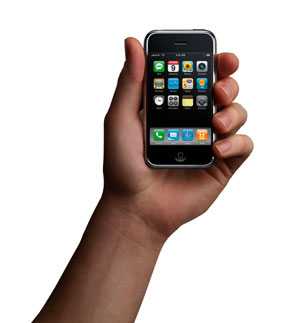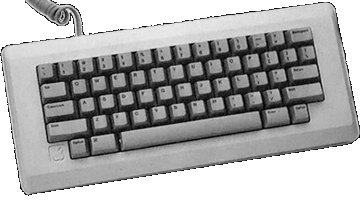iPhone

Essentials
Family: iOS
Codename: iphone
Minimum OS: iPhone OS 1.0
Maximum OS: iPhone OS 3.1.2
Announced: January 2007
Introduced: June 2007
Terminated: June 2008
Processor
CPU: Samsung S3C6400 (ARM11 core)
CPU Speed: 400 MHz
FPU: integrated
Bus Speed: 100 MHz
Register Width: 32-bit
Data Bus Width: 32-bit
Address Bus Width: 32-bit
Level 1 Cache: 16 kB data, 16 kB instruction
Onboard RAM: 128 MB
Maximum RAM: 128 MB
Video
Screen: 3.5" multi-touch
GPU: PowerVR MBX-Lite
Max Resolution: 480x320
Video Out: composite, component (via Dock Connector)
Camera: 2MP
Storage
Flash Drive: 4/8/16 GB
Input/Output
USB: via Dock Connector
Audio Out: stereo 16 bit mini
Speaker: mono
Microphone: mono
Sensors: Accelerometer, Proximity sensor, Ambient light sensor
Networking
Wi-Fi: 802.11b/g
Bluetooth: 2.0+EDR
Cellular: GSM/EDGE (850, 900, 1800, 1900 MHz)
Location: Assisted GPS (EDGE + WiFi)
Miscellaneous
Battery Life:
- Talk 8 hrs
- Standby 250 hrs
- Internet 6 hrs
- Video 7 hrs
- Audio 24 hrs
Dimensions: 4.5" H x 2.4" W x 0.46" D
Weight: 0.3 lbs.

Announced in January 2007 and released the following June, the iPhone marked Apple's entry into the cellular phone marketplace. Described by Steve Jobs as "a wide-screen iPod with hand controls... a revolutionary mobile phone... [and] a breakthrough Internet communications device," the iPhone was the first Apple-branded consumer device to run on OS X. Based around a touch-based user interface with a single button, the iPhone was controlled using a variety of one- and two-finger gestured. It included a custom version of Safari that allowed full browsing of any web page, a revamped iPod interface with CoverFlow, integrated access to YouTube and Google Maps, an iChat-like SMS text-messaging interface (iChat itself was missing from the initial release), and a standard set of cellphone apps, such as a calendar, an address book and a calculator.
The iPhone was available exclusively with AT&T voice/data plans, and was limited to EDGE-based network access, rather than the faster 3G wireless networking standard. This was mitigated somewhat by an integrated 802.11g WiFi chipset, which allowed for faster browsing on any available WiFi network.
Though the iPhone officially only supported web-based applications from third-party developers, an underground development effort was quickly organized, and within a few months native 3rd party applications were widely available. Warantee-breaking hardware modifications to "unlock" the iPhone from the AT&T network were also uncovered. The iPhone was sold in two configurations: a 4 GB model sold for $499, and an 8 GB model for $599. In September 2007, Apple discontinued the 4 GB model, and dropped the price of the 8 GB model to $399 (a $100 Apple Store credit was offered to angry early adopters). In February 2008, a $499 16 GB model was added. All models were discontinued in June 2008, with the release of the iPhone 3G.
Picture Credits:
Apple, Inc.
